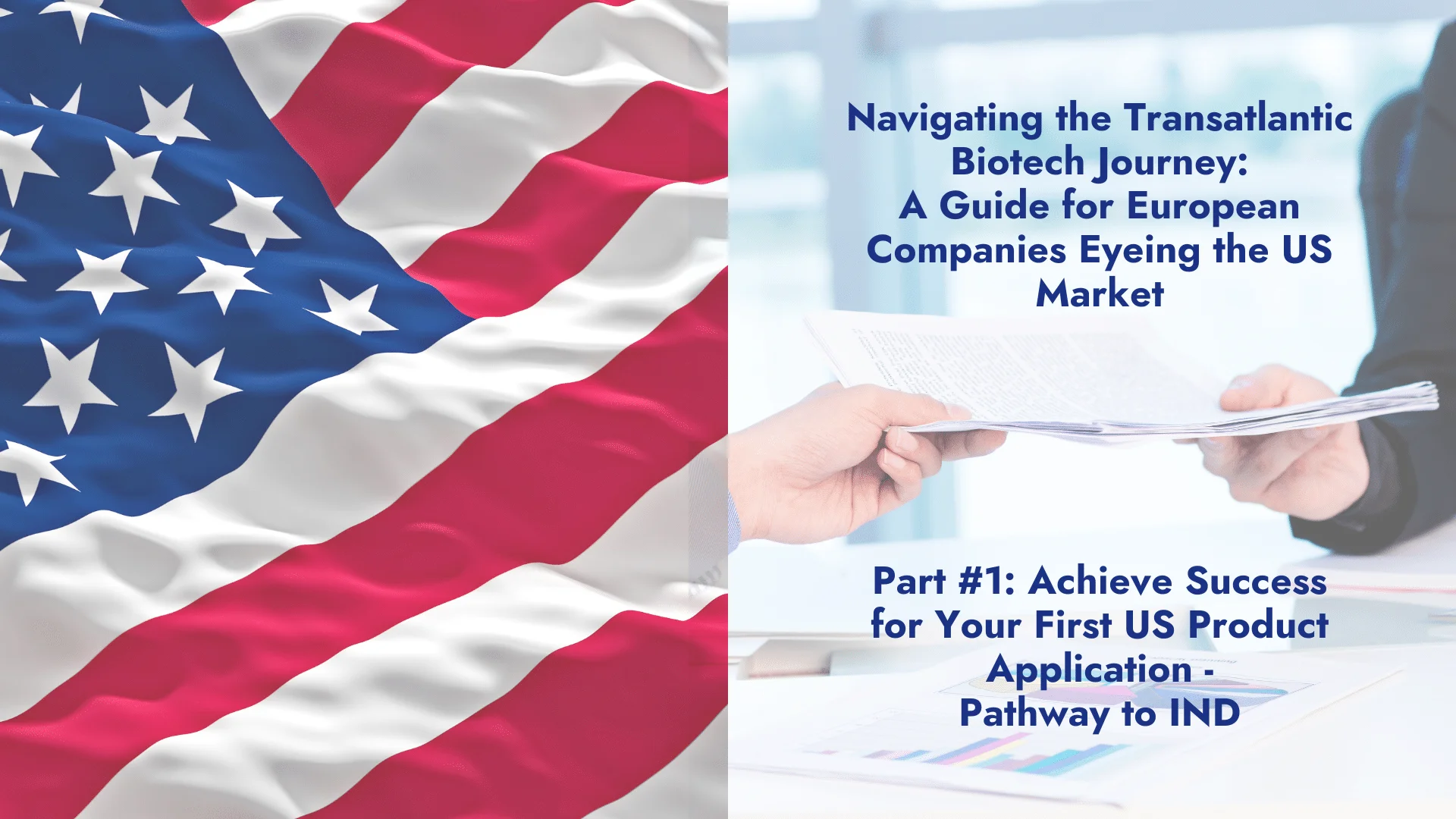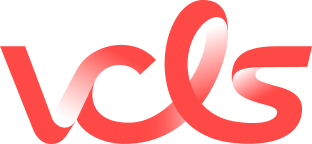Achieve Success for Your First US Product Application – Pathway to IND

Published on: Apr 22nd, 2024
Embarking on the journey to expand into the United States market is a pivotal moment for any European biotech company. With its vast landscape of opportunities, the US offers unparalleled potential for growth and innovation. However, navigating the complexities of the American regulatory landscape, understanding the nuances of conducting clinical trials, and grasping the intricacies of FDA interactions can be daunting tasks for even the most seasoned European companies.
We understand that no two development programs are alike. When European companies are thinking of expanding their product development to the US, there are some key considerations. In our comprehensive blog series, “Navigating the Transatlantic Biotech Journey,” we delve into the essential factors that European biotech firms must consider before taking the leap across the pond. From understanding the path to IND and securing a US agent to leveraging FDA accelerated pathways and optimizing interactions with the regulatory body, our series leaves no stone unturned.
Each instalment of this series will tackle critical topics such as dos and don’ts when engaging with the FDA, best practices for running clinical trials in the US, and specialized considerations for MedTech startups venturing into this dynamic market.
Whether you’re a burgeoning biotech startup or an established player in the European market, our blog series aims to equip you with the knowledge and insights necessary to navigate the complexities of the US market successfully.
Achieve Success for Your First US Product Application – Pathway to IND
The drug development process is becoming increasingly specialized and the development pathway that works for one program may not work or be applied to another program for the same indication. For this reason, it is important to assemble a project team with experience and expertise across all necessary disciplines, such as chemistry, nonclinical, clinical, and regulatory. The project team is critical to the success of your program and will guide the development of the Target Product Profile (TPP).
The specific indication and whether the treatment is for an acute, intermediate, or chronic condition will determine the development pathway and the specific studies, both nonclinical and clinical, that will be needed to support the program.
For example, compounds that pass the blood-brain-barrier will generally need a battery of Central Nervous System studies conducted in nonclinical models.
Compounds that are being developed to treat a condition that occurs intermediately, such as migraines, will still follow long-term nonclinical and clinical development standards.
The route of administration of the compound is key to determining what studies will be needed and when; if more than one route of administration is being considered, the first route developed should be carefully considered.
In general, the number one reason Investigational New Drug Applications (INDs) are placed on clinical hold by FDA is that the study/protocol does not adequately describe how the safety of the subjects/patients will be ensured in the planned clinical study. In this webinar, we specified some of the main reasons for clinical hold.
What does it mean to “Begin with the End Goal in Mind?”
The ultimate goal of the development program is to identify and gather the data needed to support a marketing application with the desired prescribing information for the planned indication. The TPP is a means to communicate the mechanism of action, product formulation, indication, and patient population that the compound may treat; route of administration and dosing regimen; safety profile of the product; and packaging. All of these components are compiled to prepare the initial TPP for the compound. The TPP then becomes the roadmap for the development program for what studies will need to be conducted to support the ultimate approval of the product. Developing a TPP is also essential for early discussions with FDA regarding the nonclinical and clinical programs that will be needed to support the labelling. Companies looking for funding and/or partnering opportunities have a concise document that can be used to communicate the development pathway for the program.
What information should an Investigational New Drug (IND) application contain?
In general, an initial first-in-human IND must contain a summary of the following information to be submitted for review by FDA to make a determination that it is safe to proceed into clinical testing.
-
Chemistry, Manufacturing, and Controls Data (CMC) – This information provides a summary of the composition, manufacturer, stability and controls used for manufacturing the drug substance and drug product. The FDA is looking for data to confirm that the sponsor can adequately and consistently supply the batches of the drug.
-
Nonclinical Data – A summary of the nonclinical pharmacology, pharmacokinetic, and toxicology studies that have been conducted which provide sufficient data (including exposure data) to support the clinical protocol. These data are used to set the starting dose for the initial clinical studies.
-
Clinical Protocol – The CMC and nonclinical data should be sufficiently detailed and provide adequate information for FDA reviewers to make a determination that human subjects would not be put at undue risk when exposed to the investigational drug as described in the clinical protocol.
What is the Purpose of an Investigational New Drug Application?
Submission of the IND follows the CMC portion of drug development where the sponsor ensures the drug substance and drug product can be consistently produced and supplied to support the clinical program. Prior to the IND submission, nonclinical studies will have been completed to justify the proposed indication for the compound and to show that it is reasonably safe to conduct clinical trials in humans.
Following identification and testing of a lead molecule, the next major hurdle is submission of an IND and agreement from FDA to allow the sponsor to test the compound in human clinical trials. According to federal law, a drug must be the subject of an approved marketing application before it is transported or distributed across state lines. In general, in order to conduct clinical trials, a sponsor will probably want to ship the investigational drug to clinical investigators in many states, therefore, it must seek an exemption from that legal requirement. The IND is the means through which the sponsor technically obtains this exemption from FDA.
Communicate with FDA as Your Partner
The FDAs main role at this early stage in the drug development process is to provide guidance to sponsors through the publishing of guidance documents. Additionally, either during a pre-IND meeting or review of the available data included in the IND, FDAs goal is to ensure that the compound is reasonably safe to move forward into clinical testing in the manner proposed by the clinical protocol. This determination is based on review of available CMC and nonclinical data.
Following submission of the IND, FDA has a 30-day review period to make this determination. In order to obtain maximum benefit from the interactions with FDA, it is important for sponsors to identify potential issues with the development program such that the issues can be addressed early on in the program. Additionally, discussing the clinical plan as outlined in the TPP will allow FDA to assist in guiding the development pathway.

Questions? Get the answer by our expert team
No two product developments are the same, talk to our experts about your development challenges and we will provide your actional recommendations.

